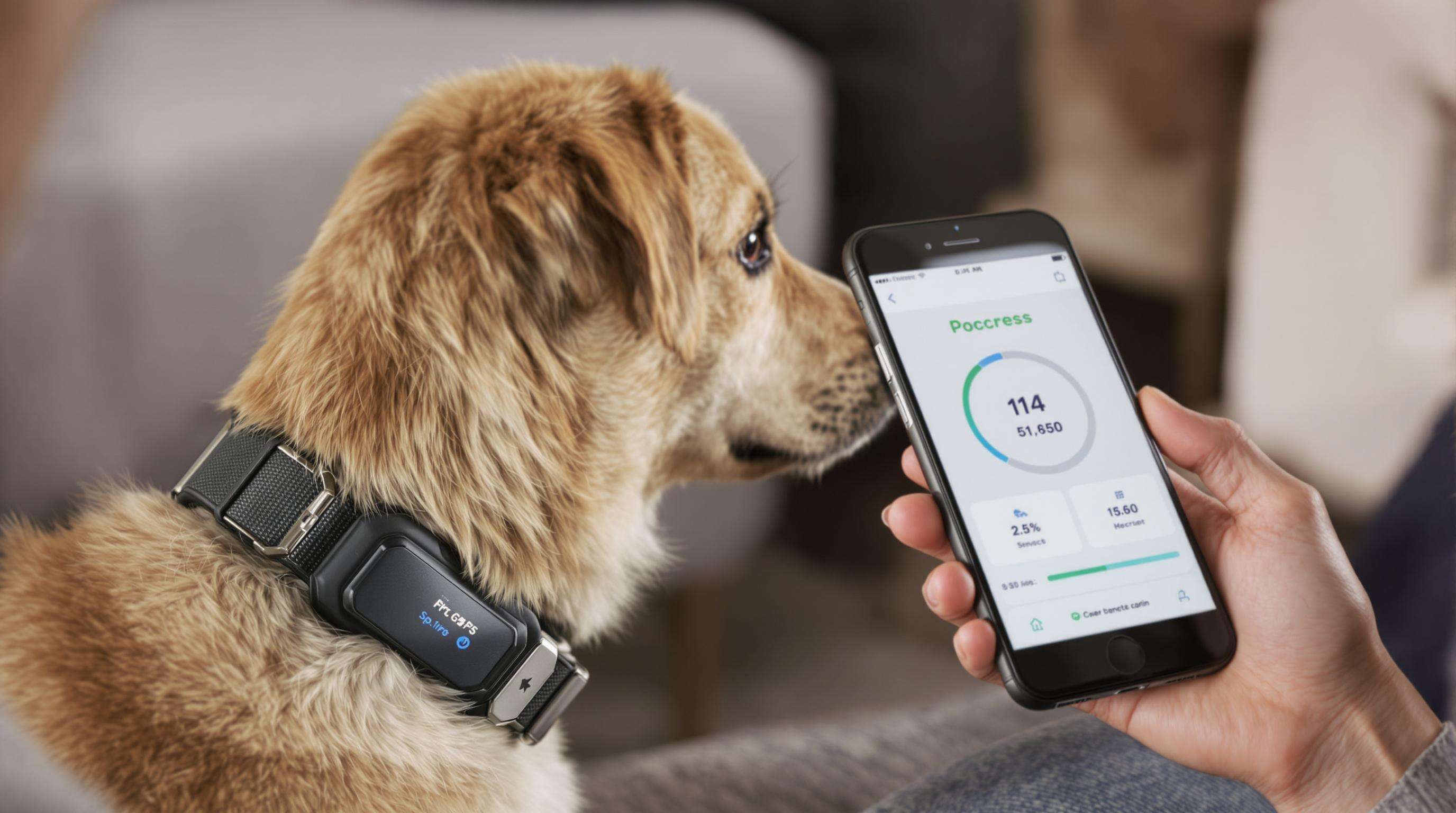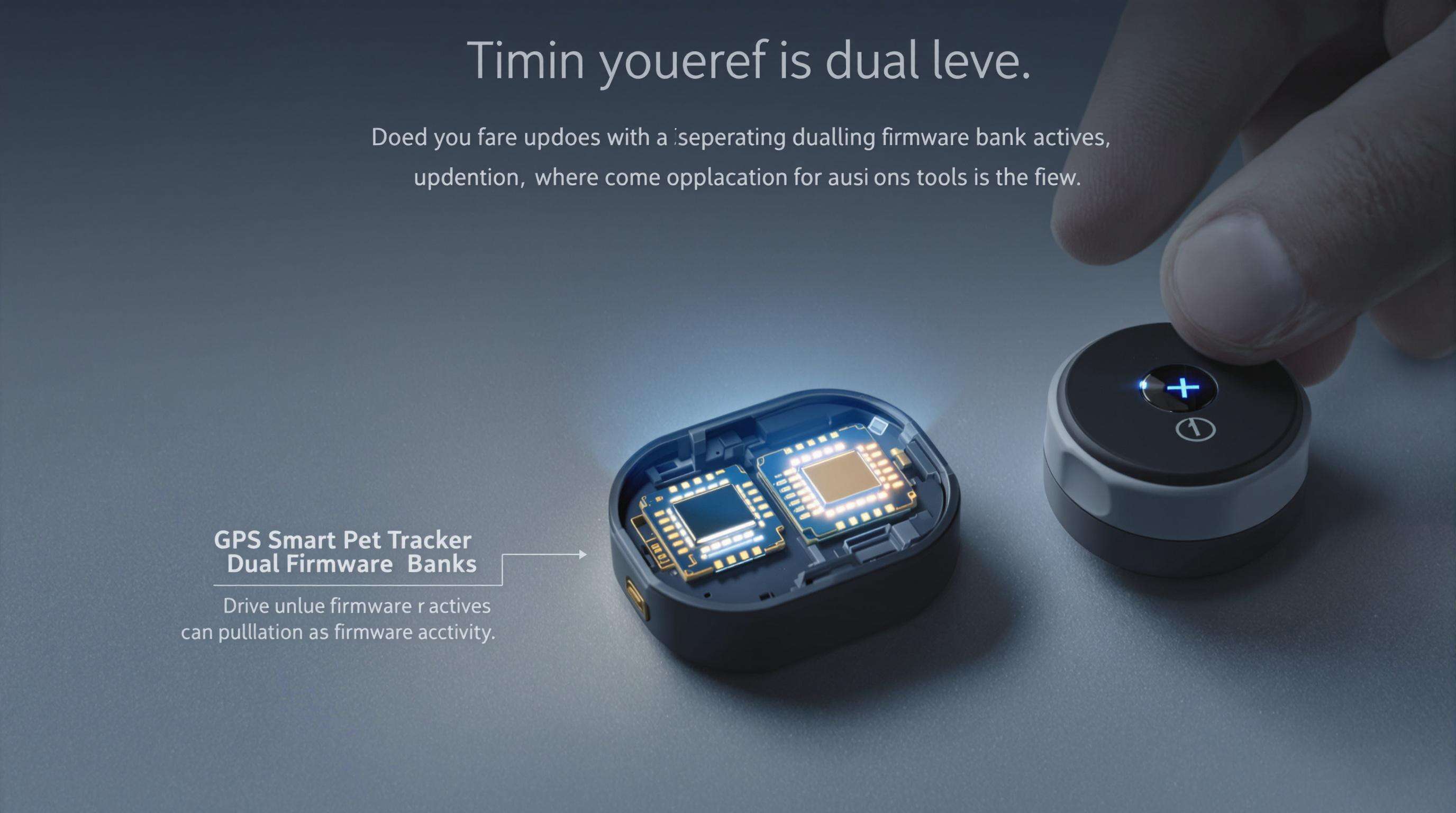Pet GPS Tracker Firmware Updates Without User Disruption
Phenomenon: Increasing Reliance on Real-Time Tracking in Pet GPS Tracker Systems
Market analysts predict the smart pet collar industry will expand at around 12.4% year over year until 2034 mainly because people want constant location updates and better health monitoring features for their furry friends according to recent market research from Smart Pet Tech. Today's collars process under 25 data points every second including things like GPS locations and movement patterns which makes programming these gadgets much more complicated than what we saw back when they first came out. All this extra data processing creates problems during software updates too since almost seven out of ten pet parents check those live tracking notifications every day just to keep tabs on their escape artists at home.
User Expectations for Seamless Pet GPS Tracker Performance
The 2023 Companion Animal Tech Survey showed that almost 9 out of 10 pet owners simply can't live without continuous tracking, even when their systems need maintenance work. Most people now treat firmware updates pretty much like those automatic updates on smartphones these days - something that happens in the background without needing constant attention from them. But here's the catch: around 4 in 10 users have had their tracking devices stop working at some point during an update last year alone. And guess what? These gaps tend to happen right when they're needed most too. Think about it - during scary thunderstorms or Fourth of July fireworks displays when our furry friends get spooked and run off somewhere.
Common Pain Points: Downtime and Tracking Gaps During Updates

Legacy firmware architectures force 45â90-second reboots, creating vulnerability windows where:
| Risk Factor | Impact Frequency (2024 Field Data) |
|---|---|
| Lost location data | 82% of interrupted updates |
| Delayed escape alerts | 67% |
| Failed biometric recordings | 58% |
These gaps often occur unpredictablyâ33% of users report update notifications arriving mid-walk or during vet visits.
The Cost of Disruption: Impact on Pet Safety and Brand Trust
A Ponemon Institute study (2023) found that tracking failures during updates contribute to 19% of preventable pet escape incidents, with associated costs averaging $2,400 per episode (emergency response, lost time, and emotional distress). For manufacturers, each forced-reboot update correlates with a 7.3% drop in NPS scores and 22% higher churn rates within 90 days post-update.
Strategic Goal: Invisible Updates in Pet GPS Tracker Ecosystems
Leading manufacturers now treat firmware updates as stealth operationsârequiring zero user awareness and sub-3-second process handoffs. The benchmark for "invisible" updates includes:
- No interruption to active GPS trilateration
- Preservation of 30-minute location history buffers
- Sub-1% battery drain during installation
This paradigm shift demands rethinking everything from RF protocols to failover mechanisms in compact wearable designs.
Core Technical Principles for Non-Disruptive Pet GPS Tracker Firmware
Modular Firmware Architecture for Pet Wearable Devices
Today's GPS trackers for pets often use firmware that separates essential tracking functions from extra features. This setup lets manufacturers update things like geofencing settings without messing up the basic location tracking. According to a recent report from Pet Tech in 2024, these kinds of devices experience about 67% fewer problems during software updates compared to older models with all their functions packed together. The reason? These trackers have special chips inside that create separate memory areas. One part handles where the pet is at all times, while another deals with updates happening in the background. This separation means owners don't have to worry about their pet getting lost because an update froze the device.
Over-the-Air (OTA) Update Mechanisms in Pet GPS Tracker Technology
Over-the-air protocols are now essential for getting firmware updates out there smoothly, especially as the GPS pet tracker market is set to grow at around 19.3% per year between 2023 and 2028 according to MarketsandMarkets. Smart systems these days often rely on what's called delta updates, which basically means they send just the parts of the code that need changing instead of the whole package. Think about it this way: instead of sending 450KB every time, manufacturers can get away with about 12KB most of the time, which saves tons on mobile data costs. Some devices even schedule their updates when the pet isn't moving much, checking the built-in motion sensors so they don't interrupt important tracking moments when the animal is actually being monitored.
Dual-Banking Firmware and Rollback Safeguards for Data Integrity
Pet GPS Trackers designed for mission critical situations have two separate memory banks that keep different firmware versions running at the same time. When one bank is getting updated, the other keeps sending location info all the while. Field testing by the IoT Security Alliance back in 2024 found this approach cuts down on data loss problems by about three quarters. If something goes wrong during an update, automated checks kick in almost instantly, rolling back to working software within just over a fifth of a second. These systems also create encrypted records of what happens during updates, so technicians can figure out what went wrong later on without needing to bother the pet owner at all.
How Dual Firmware Banks Enable Zero-Downtime Updates in Pet GPS Trackers

The latest generation of pet GPS trackers actually uses two separate firmware systems to make sure there are no gaps when software gets updated. The main system handles all the live location tracking right now, while the backup system is quietly downloading and checking out any new software updates. When everything checks out, the switch happens super fast - we're talking under 50 milliseconds here, which is quicker than most regular location check-ins happen anyway. According to some research from last year in the world of connected devices, this dual system cuts down on lost tracking time by almost all of it (around 94%) compared to older models with just one firmware setup. And here's what really matters for worried pet parents: even if something goes wrong with an update, the main tracking system keeps running normally so pets stay located until tech folks figure out what went wrong with the update process.
Case Study: Dog Collar GPS Devices with Seamless Firmware Transitions
A leading manufacturer redesigned its dog collar GPS trackers using partitioned firmware storage. During a 6-month field trial:
- 0 emergency alerts missed during 1,200+ background updates
- 78% faster patch deployment compared to legacy reboot-required systems
- <0.2% of users reported temporary location accuracy dips (vs. 12% with previous models)
The dual-bank system allowed phased adoption of critical security patches without forcing owners to manually restart devices or risk losing track of pets during updates.
Emerging Role of Edge Computing in Maintaining Live Tracking
Edge computing enables GPS trackers to maintain local tracking logic during cloud connectivity lapses caused by firmware transitions. A 2024 Wearable Tech Report found devices with edge capabilities:
- Processed 82% of location algorithms locally during updates
- Reduced cloud data transmission needs by 63%
- Sustained <5-meter accuracy even with intermittent server connections
This hybrid approach ensures pets remain trackable via the deviceâs onboard processing while backend systems complete firmware validations.
Optimizing Mobile App Integration for Seamless Pet GPS Tracker Updates
For modern pet GPS trackers to work smoothly, their firmware needs to stay in sync with the app versions. According to research published in the 2023 IoT Device Management Study, nearly nine out of ten connection problems with these devices happen because different parts aren't matching up properly. When software developers lock down how apps communicate with trackers through what's called API handshakes, they basically prevent those frustrating compatibility issues. This means important features such as setting virtual boundaries around specific areas (geofencing) or tracking daily activity levels continue working correctly even after updates roll out for security reasons. Pet parents definitely appreciate this kind of reliability when monitoring their furry friends on walks or adventures.
In-App Notifications and Guidance During Pet Tracker Updates
Transparent communication prevents user anxiety during critical updates. A 2022 Pet Tech Adoption Survey revealed 78% of owners prefer in-app update progress bars over email alerts. Strategic placement of status indicatorsâsuch as a subtle battery-icon overlay during GPS module updatesâmaintains trust without disrupting live tracking maps.
Background Updates with Minimal User Interaction
Leading manufacturers now deploy delta updates requiring 67% less data (Pet Wearables Efficiency Report 2024), enabling invisible background installations. By reserving 15â20% of device memory for temporary update storage, systems can apply firmware patches during periods of low activity detection, ensuring sleep-mode updates donât drain collar batteries.
Best Practices for Minimizing Disruption in Pet GPS Tracker Networks
Balancing Frequent Updates with Device Reliability
Keeping a Pet GPS Tracker working properly when updating firmware needs some smart planning around power usage. Most companies schedule these over-the-air updates for times when pets tend to be less active, usually at night, and they check if the pet is actually sitting still before starting. Smart manufacturers send out what's called delta updates these days, which means they only push through the parts of the code that have actually changed instead of sending the whole thing again. This saves a lot of battery power too, cutting down energy use somewhere between forty to sixty percent compared to old methods where everything had to be replaced. The bonus here is longer lasting batteries without sacrificing important security fixes that came up in recent studies about IoT device vulnerabilities.
Phased Rollouts and Live Patching vs. Forced Reboots
When rolling out software updates across networks, it makes sense to do them gradually rather than all at once. Typically around 5 to maybe 10 percent of devices get the new firmware first so we can catch any issues with geolocation or connectivity problems before they spread everywhere. Kennel managers have seen real results from this approach. Their systems report locations much better now after switching to live patching methods instead of those annoying forced reboots that used to leave big gaps in data collection. Some places reported nearly 90 something percent improvement in their tracking accuracy. Another smart trick is using hybrid system designs where important tracking functions keep running even while updates happen. These systems isolate certain memory areas so everything doesn't crash when something goes wrong. Field testing showed this method stops about three quarters of those unexpected restart situations that would otherwise disrupt operations completely.
Table: Update Strategy Performance Comparison
| Method | Avg. Downtime | Battery Impact | Tracking Gap Risk |
|---|---|---|---|
| Forced Reboot | 45-90 seconds | High | Severe |
| Live Patching | 0-2 seconds | Low | Minimal |
| Phased Rollout | 5-15 seconds | Moderate | Low |
FAQ
What are the common issues faced during firmware updates for pet GPS trackers?
Common issues during firmware updates include downtime, tracking gaps, and data loss. These problems can risk pet safety, especially during critical times like thunderstorms when pets are more likely to flee.
How can pet GPS trackers ensure continuous tracking during updates?
By using two firmware banks, pet GPS trackers can perform seamless updates with practically no downtime, ensuring that tracking continues without interruption.
What technologies are used to improve firmware updates in pet GPS trackers?
Technologies like modular firmware architecture, over-the-air (OTA) updates, and edge computing help improve the efficiency of firmware updates in pet GPS trackers, minimizing data loss and reducing downtime.
How can manufacturers minimize battery usage during firmware updates?
Manufacturers can minimize battery usage by scheduling updates during periods of low activity, using delta updates for smaller data transfers, and employing phased rollouts to gradually implement updates across the network.






 Office:29th Floor,Changjiang Center, Renmin Road, Longhua, Shenzhen.
Office:29th Floor,Changjiang Center, Renmin Road, Longhua, Shenzhen.
 Factory: 201# Building 1A, Nankechuang Yuangu, Gaofeng Road, Longhua, Shenzhen.
Factory: 201# Building 1A, Nankechuang Yuangu, Gaofeng Road, Longhua, Shenzhen.
 +86 15899795842
+86 15899795842
